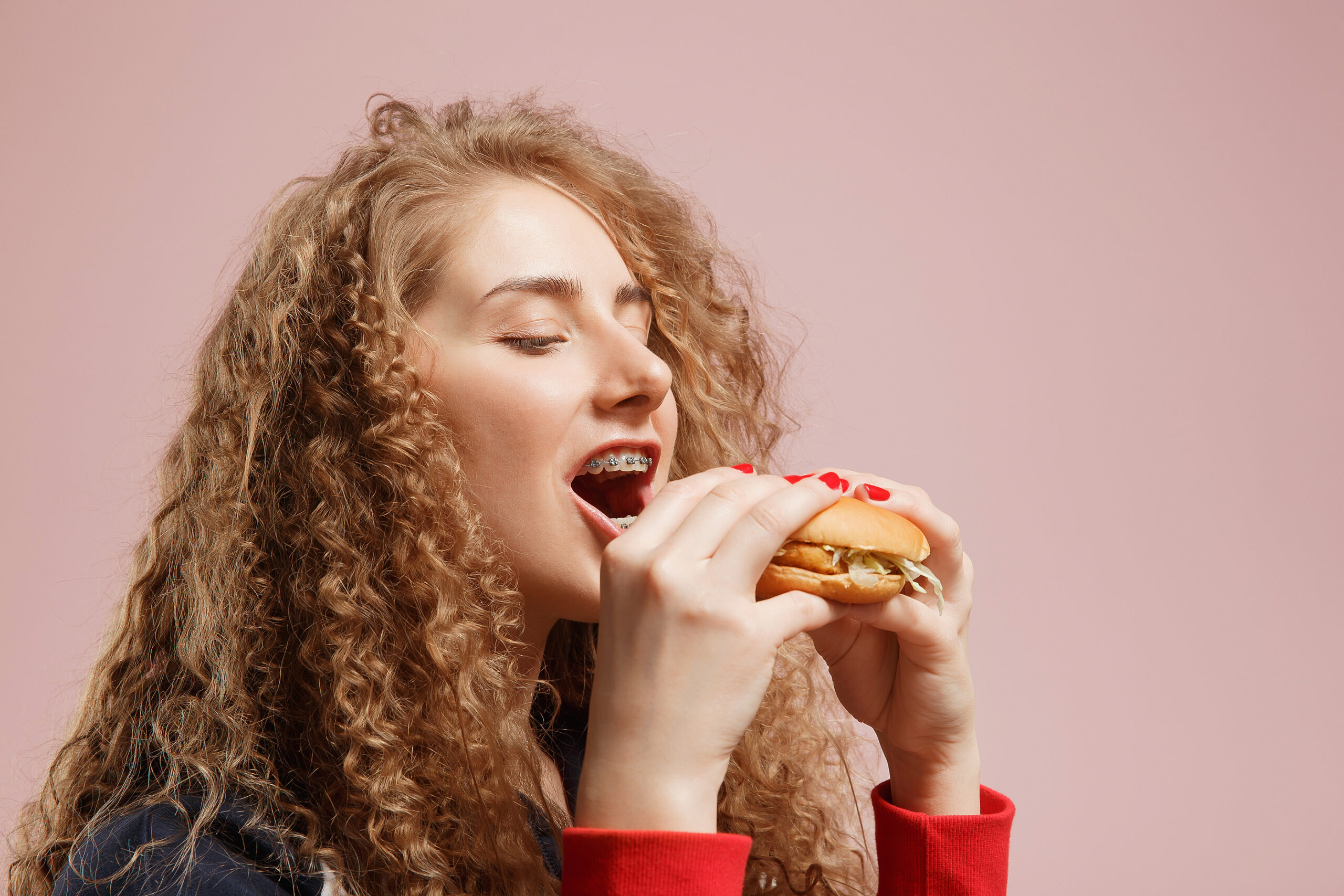How Long After Getting Braces Can You Eat Solid Food?

If you’ve just started your orthodontic journey, one of the first questions on your mind might be: How long after getting braces can you eat solid food? Braces are a big adjustment, not just for your teeth but also for your daily routine, including what you can and can’t eat. At Dr. Lints Orthodontics, we understand that patients want to know how soon they can return to enjoying their favorite meals while still protecting their smile.
In this blog, we’ll explore the timeline for eating solid foods after braces, foods to enjoy and avoid, tips for easing discomfort, and how options like Invisalign in Suttons Bay may offer more dietary flexibility.
The First Few Days After Getting Braces
Right after getting braces, it’s normal to feel some soreness as your teeth and gums adjust. This discomfort typically lasts for 3–5 days. During this period, it’s best to stick with soft foods that don’t require much chewing. Examples include:
- Mashed potatoes
- Yogurt
- Oatmeal
- Smoothies
- Scrambled eggs
- Soups
Not only will these foods be easier on your teeth, but they’ll also help prevent unnecessary irritation to your braces.
When Can You Eat Solid Food Again?
Most patients can start eating more solid foods about a week after getting braces, once the initial soreness has subsided. However, that doesn’t mean you can go back to eating anything you want right away. Hard, crunchy, or sticky foods can damage your braces and prolong your treatment.
Solid foods that are safe after the first week include:
- Soft pasta dishes
- Rice
- Tender chicken or fish
- Steamed vegetables
- Soft fruits like bananas or peaches
If you’re wondering, “How long after getting braces can you eat crunchy foods like apples or carrots?” The answer is that you can still enjoy them, but only if they’re cut into small pieces to avoid breaking brackets or wires.
Foods to Avoid Throughout Treatment
Even after you can eat solid foods again, there are certain items you’ll need to avoid throughout your braces journey. According to the American Association of Orthodontists, these include:
- Sticky candies (caramel, taffy, gummy bears)
- Hard foods (nuts, popcorn kernels, ice, hard pretzels)
- Chewy foods (bagels, pizza crust)
- Sugary snacks and sodas (which increase the risk of cavities around braces)
At Dr. Lints Orthodontics, we always remind patients that protecting their braces means protecting their investment in a healthier, straighter smile.
Tips for Eating Comfortably With Braces
Adjusting to braces takes patience, but a few strategies can make the process easier:
- Cut food into smaller pieces – This reduces pressure on your teeth and braces.
- Chew with your back teeth – This is because molars are stronger and less sensitive.
- Use orthodontic wax – It can cover sharp edges on brackets that might irritate your cheeks.
- Rinse with warm saltwater – This soothes sore gums and promotes healing.
- Stay hydrated – Drinking water helps wash away food particles that can get stuck in braces.
Invisalign: A Flexible Alternative
If food restrictions are a major concern for you, Invisalign in Suttons Bay may be a great option. Unlike traditional braces, Invisalign aligners are removable, which means you can continue enjoying your favorite foods without worrying about damaging wires or brackets.
Patients often choose Invisalign for its convenience, comfort, and nearly invisible appearance. At Dr. Lints Orthodontics, we offer personalized Invisalign treatment plans tailored to your lifestyle, allowing you to achieve excellent results while maintaining your daily activities.
Why Choose Dr. Lints Orthodontics in Suttons Bay
Choosing the right orthodontist in Suttons Bay makes all the difference in your treatment experience. Here’s why families trust Dr. Lints Orthodontics:
- Experienced Care – Dr. Lints has years of expertise in orthodontics and keeps up with the latest advances.
- Personalized Treatment Plans – Every smile is unique, so your treatment is tailored to your needs.
- Advanced Options – From traditional braces to Invisalign, we provide comprehensive orthodontic solutions.
- Friendly, Supportive Team – Our staff is dedicated to making your journey comfortable and stress-free.
- Convenient Location – We proudly serve patients seeking braces in Suttons Bay and the surrounding areas.
FAQs About Eating With Braces
- Can I eat pizza with braces?
Yes, but stick to soft-crust pizza and avoid tough or crunchy crusts that may damage your braces. - How soon after braces can I eat meat?
You can enjoy tender meats, such as chicken or fish, after the first week. Avoid tough cuts that require excessive chewing. - Can I chew gum with braces?
No, gum can stick to your braces and pull on wires, causing damage. - What’s the best way to clean teeth after eating with braces?
Brush after every meal and use an interdental brush or water flosser to remove food particles stuck between braces. - Will I ever get used to eating with braces?
Yes! Most patients adjust within a couple of weeks and find a comfortable eating routine.
Contact Us at Dr. Lints Orthodontics
So, how long after getting braces can you eat solid food? The short answer is: usually after about a week, once the initial soreness fades. But even then, it’s important to choose your foods wisely to avoid damaging your braces and delaying your treatment.
If you’re considering orthodontic treatment or want more guidance on life with braces, our team at Dr. Lints Orthodontics is here to help. Whether you’re exploring braces in Suttons Bay or prefer the flexibility of Invisalign in Suttons Bay, we’ll guide you toward the best solution for your smile.
Ready to start your journey to a healthier, more confident smile? Schedule a consultation with us today.
GETTING STARTED WITH INVISALIGN
If Invisalign sounds like it is the right fit for you, call or text us to set up a complimentary consultation. During this consultation, Dr. Lints and team will:
- 1. Review your dental and medical history
- 2. Perform a complete oral exam
- 3. Help you determine if Invisalign is the best route for you
- 4. Create you a customized treatment plan with before and after simulation
- 5. Discuss flexible payment plan options and insurance benefits if applicable


